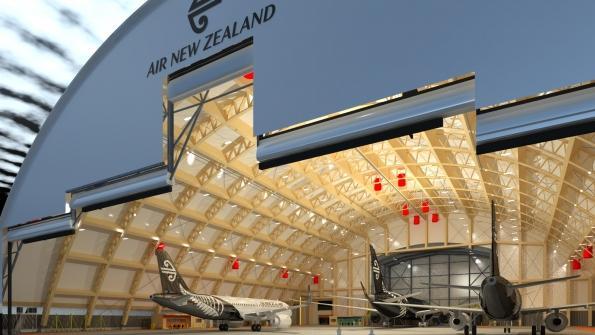
Air New Zealand has told investors that it expects to incur NZ$150 million ($104 million) of average annual expenditure on engine maintenance, subject to demand returning as expected.
The airline also highlighted up to NZ$200 million annually of non-aircraft expenditure, which will include a one-off investment in a new Auckland engineering hangar.
Furthermore, as part of cost-control efforts in the wake of the pandemic, Air New Zealand is consolidating its regional heavy maintenance activities in Christchurch.
Those expenditures are in addition to an average of almost NZ$450 million per year for new aircraft as the flag carrier replaces its Boeing 777-300ER fleet with 787s and current-generation Airbus A320s with Neo variants.
Most of its seven remaining 777s are in storage, although one was recently reactivated for all-cargo services.
Air New Zealand plans to realize maintenance efficiencies and savings by simplifying its fleet further, from five aircraft types to four—versus eight types 10 years ago.
The current fleet comprises 103 aircraft: 787s, 777s, A320s, ATR72s and DHC Dash 300s, with an average age of 6.7 years. By 2028 it aims to have 107 aircraft: 787s, A320s and the two turboprop types, with an average age of roughly 10 years.
The flag carrier was highlighting these plans as part of a pitch to investors for a NZ$1.2 billion rights offer, half of which will be taken up the state to maintain its 51% shareholding.
Given that NZ$850 million of the proceeds of the rights offer are to repay a state loan to the airline, the move is essentially a debt-for-equity swap with the state, something that many airlines not in receipt of state loans during the pandemic feared would occur, and which they warned would distort the market.





